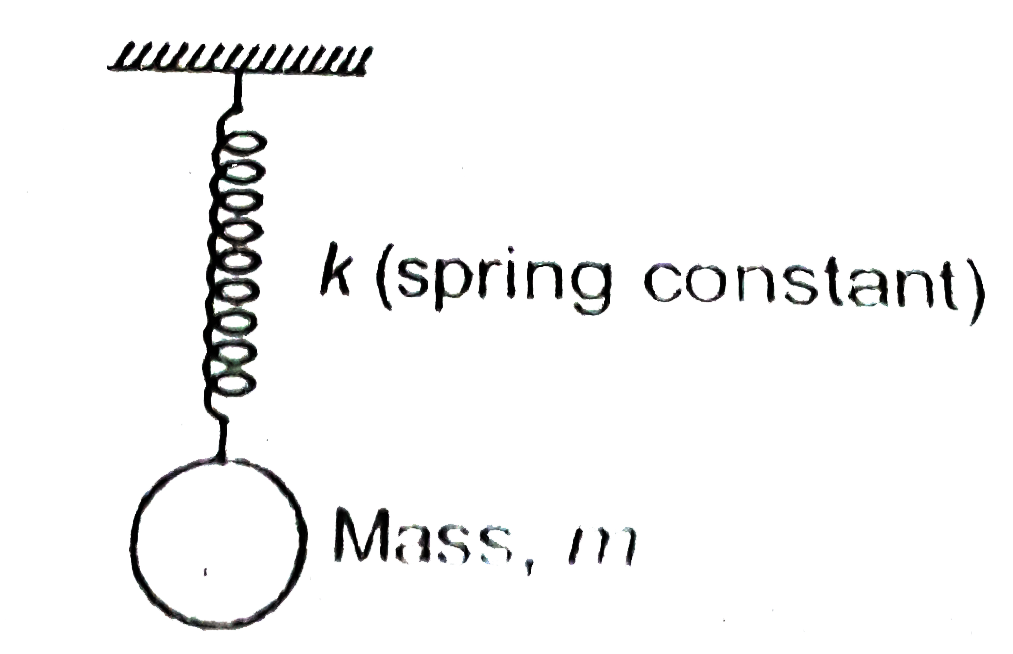A particle passes a given point moving downwards with a velocity of fifty metres per second. How long before this was moving upwards at the same rate.
The correct Answer is:F
To solve the problem, we need to determine how long before the particle was moving upwards at a velocity of 50 m/s, given that it is currently moving downwards at the same velocity.
1. Understanding the Motion:
- The particle is currently moving downwards with a velocity of v=−50m/s (we take downward as negative).
- We need to find the time t before this point when the particle was moving upwards at the same speed, which means it was moving with a velocity of u=+50m/s (upward is positive).
2. Acceleration:
- The particle is under the influence of gravity, which causes it to accelerate downwards. The acceleration due to gravity is g=10m/s2 (downward).
3. Using the Equation of Motion:
- We can use the first equation of motion:
v=u+at
- Here, v is the final velocity (downward), u is the initial velocity (upward), a is the acceleration (downward), and t is the time interval we want to find.
4. Substituting the Values:
- Substitute v=−50m/s, u=50m/s, and a=−10m/s2 into the equation:
−50=50+(−10)t
5. Rearranging the Equation:
- Rearranging gives:
−50−50=−10t
−100=−10t
6. Solving for Time t:
- Dividing both sides by -10:
t=10010=10seconds
Final Answer:
The particle was moving upwards at a velocity of 50 m/s, 10 seconds before it started moving downwards at the same velocity.
---
- The particle is currently moving downwards with a velocity of v=−50m/s (we take downward as negative).
- We need to find the time t before this point when the particle was moving upwards at the same speed, which means it was moving with a velocity of u=+50m/s (upward is positive).
- The particle is under the influence of gravity, which causes it to accelerate downwards. The acceleration due to gravity is g=10m/s2 (downward).
- We can use the first equation of motion:
v=u+at
- Here, v is the final velocity (downward), u is the initial velocity (upward), a is the acceleration (downward), and t is the time interval we want to find.
- Substitute v=−50m/s, u=50m/s, and a=−10m/s2 into the equation:
−50=50+(−10)t
- Rearranging gives:
−50−50=−10t
−100=−10t
- Dividing both sides by -10:
t=10010=10seconds
The particle was moving upwards at a velocity of 50 m/s, 10 seconds before it started moving downwards at the same velocity.
Similar Questions
A particle passes a given point moving downwards with a velocity of fifty metres per second. How long before this was moving upwards at the same rate.
View SolutionA particle of mass m moving eastward with a velocity V collides with another particle of same mass moving northwards with the same speed V. The two particles coalesce and the new particle moves in NE direction. Calculate magnitude and direction of velocity of new particle.
View Solution
Knowledge Check
- Question 1 - Select One
A train is moving with the speed of 180 km/hr. Its speed (in metres per second) is:
A50 m/sB40 m/sC30 m/sD25 m/s - Question 2 - Select One
An object of mass 5 kg is sliding on a smooth frictionless horizontal surface with a constant velocity of 10 metres per second. The force required to keep the object moving with the same velocity is
A0 NewtonB50 NewtonsC250 NewtonsD500 Newtons - Question 3 - Select One
A particle is moving eastwards with a velocity 5ms−1, changes its direction northwards in 10 seconds and moves with same magnitude of velocity. The average acceleration is
AzeroB1√2ms−2 towards N−EC1√2ms−2 towards S−ED1√2ms−2 towards N−W
A body moving in a vertical direction passes a point at height of 54.5 centimetres with a velocity of 436 centimetres per second. Its initial velocity was ………. and it will rise for .......... seconds more.
View SolutionTime period of a spring pendulum when lift moves downward with constant velocity v is T second. When the lift moves upward with constant acceleration=g3 , the time period will be
 View Solution
View SolutionA particle of mass m having velocity v moving towards north collides with similar particle moving with same velocity towards east. The two particlesstick together and move towards north east with a velocity
View SolutionA particle is projected with a velocity 200m/s at an angle of 60∘. At the highest point it explodes into three particle of equal masses. One goes vertically upward with a veloctiy 100m/s the second particle goes vertically downwards at same speed. What is the velocity of the third particle?
View SolutionA man in a balloon throws a stone downwards with a speed of 5m/s with respect to balloon. The balloon is moving upwards with a constant acceleration of 5m/s2. Then velocity of the stone relative to the man after 2 seconds is.
 View Solution
View Solution

